Fix a Slice in Golf: It’s Easier Than You Think
Want to Finally Understand How to Fix a Slice in Golf? Check Out These Surprisingly Easy Tips and Play Your Best-Ever Round This Weekend.
Most amateur golfers are dying to know how to fix a slice in golf. It’s an incredibly common problem. But not because a slice is hard to fix.
It’s because most golfers don’t know what to do to get rid of this miserable shot once and for all.
The truth is, the slice is the easiest shot to fix. We at USGolfTV love when someone wants to know how to fix a slice in golf. Why? Because we know that golfer is going to see major improvement in their game right away.
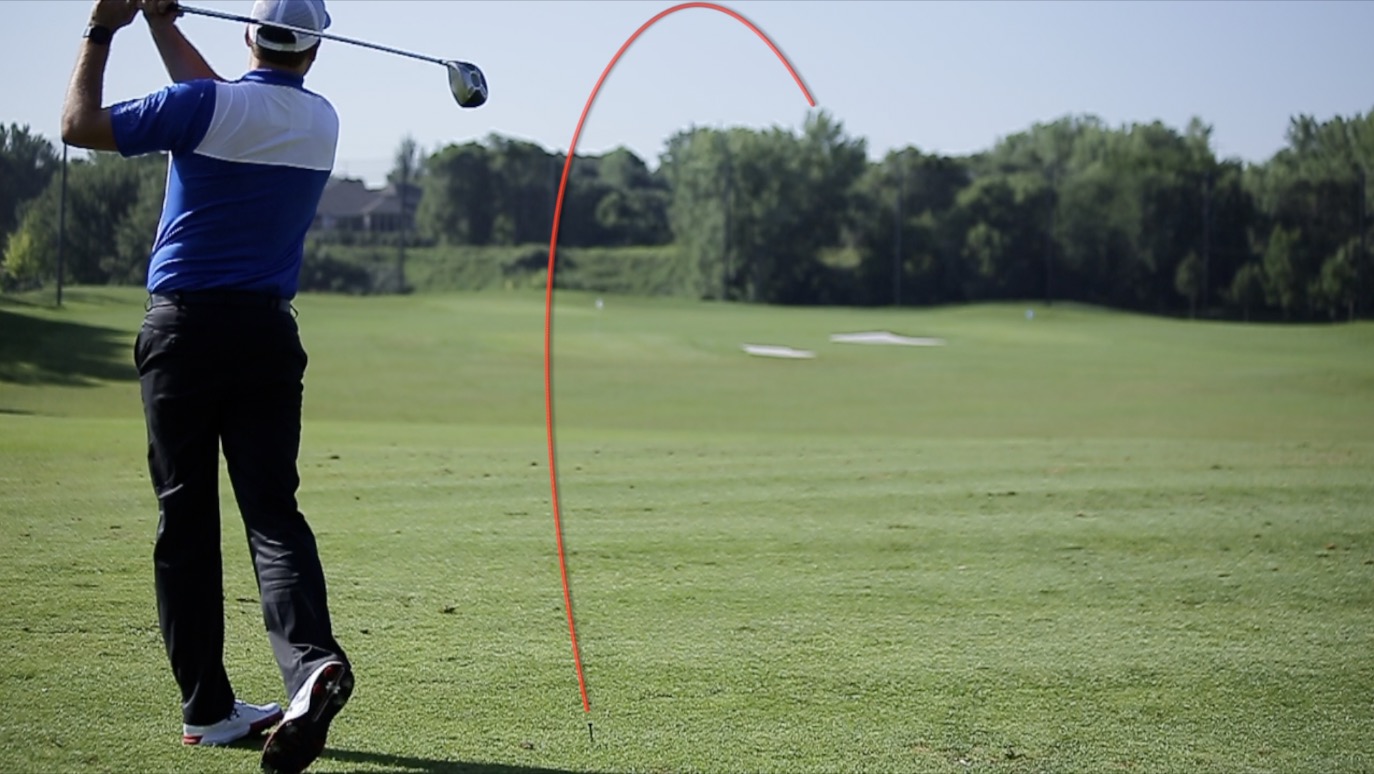
That’s how simple this is.
If you’re ready to get rid of your slice once and for all, you need to know:
- What causes the slice
- How to diagnose a slice
- The difference between slicing with your irons and slicing with your driver
- A few practice tips to correct your golf swing
Fortunately, you can find all that information right here.
What Causes a Golf Slice with Irons vs. a Driver?
Before you can correct your slice, you need to understand why it’s happening t to begin with. Here’s a quick primer on what a slice is and what’s causing you to lose control of your drives and iron shots.
What is a Slice?
As much as we’d all love to hit straight golf shots right down the center of the fairway, most of us have some curve to our ball flight.
Curve isn’t a bad thing. Think of a draw and a fade. A draw curves gently to the left (if you’re right-handed). A fade curves slightly to the right. Both of these are controlled golf shots that can help you navigate the course better because they curve.
A slice, on the other hand, is always a hindrance. For a right-handed golfer, a slice is a golf shot that curves dramatically toward the right. A slice is never controlled and never intentional. It takes you off course and adds strokes to your game.
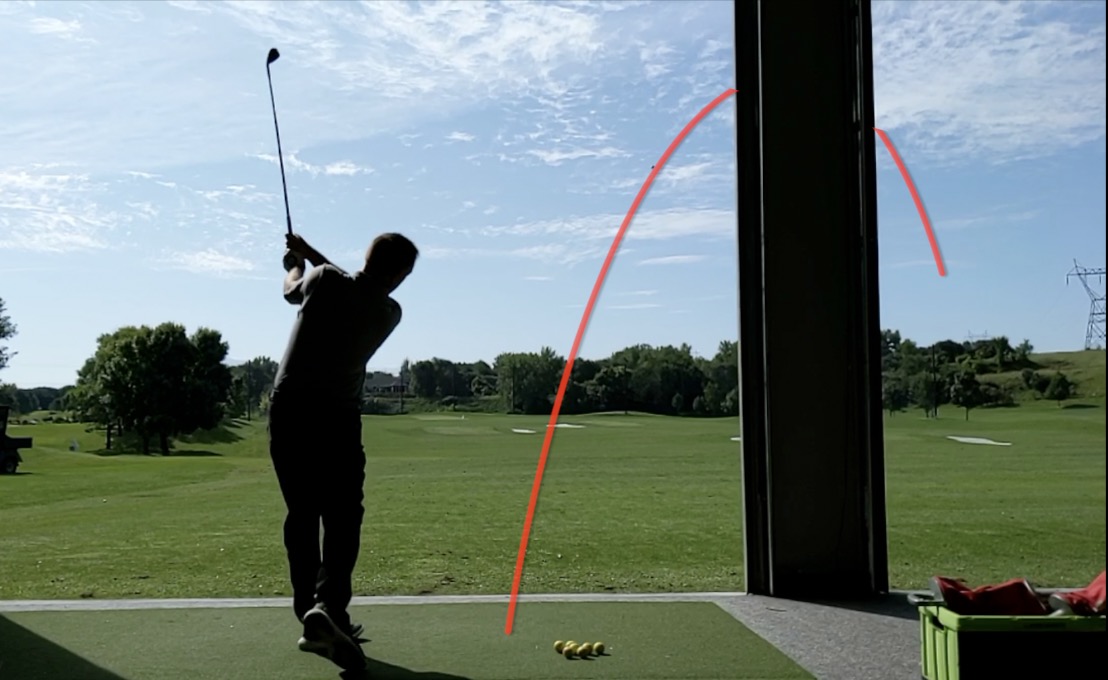
Trust us. You enjoy a round much more when you learn how to fix a slice in golf.
What’s Happening when You Slice the Golf Ball
So what exactly causes a slice?
Well, if you want to do a deep dive on this topic, you can check out our free ebook, Science of the Slice. It’s an illuminating guide that explains why all the traditional advice on how to fix a slice in golf doesn’t work.
For now, let’s keep it simple.
There are two main elements that influence the path of your ball flight:
- The orientation of the club face at impact
- The angle of the swing path
Now, the club face is in one of three positions at impact.
- Open: The club face is angled to the right of the target (if you’re right-handed)
- Closed: The club face is angled to the left of the target
- Square: The club face is aimed directly at the target
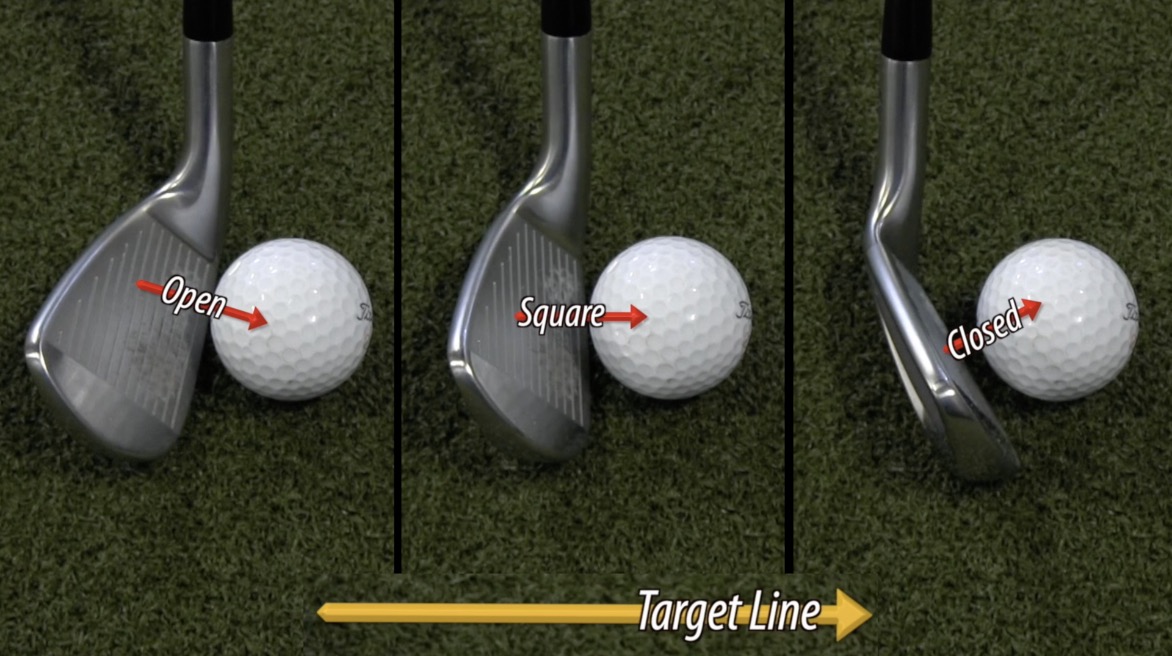
The swing path describes the path of your club head as you swing through. Your swing path will always be oriented in one of three directions.
- In to out: The swing path travels toward the right of the target (if you’re right-handed)
- Out to in: The swing path travels toward the left of the target
- Straight down the line: The swing path travels directly toward the target
The combination of these two factors can really make or break your shots. And if you’re a right-handed golfer who’s regularly slicing the golf ball, you’re probably:
- Swinging to the left
- With an open club face
Addressing these issues is key for how to fix a slice in golf.
Why You Slice Your Driver but not Your Irons
Now, here’s a mystery that has plagued countless golfers.
Why do you slice your driver more frequently than your irons?
There are a few factors that come into play. For one thing, your driver is your longest club and is designed to generate more speed. Translation: it’s a little harder to control than your irons.
The much more significant reason, however, is that you probably don’t change your setup when you’re at the tee.
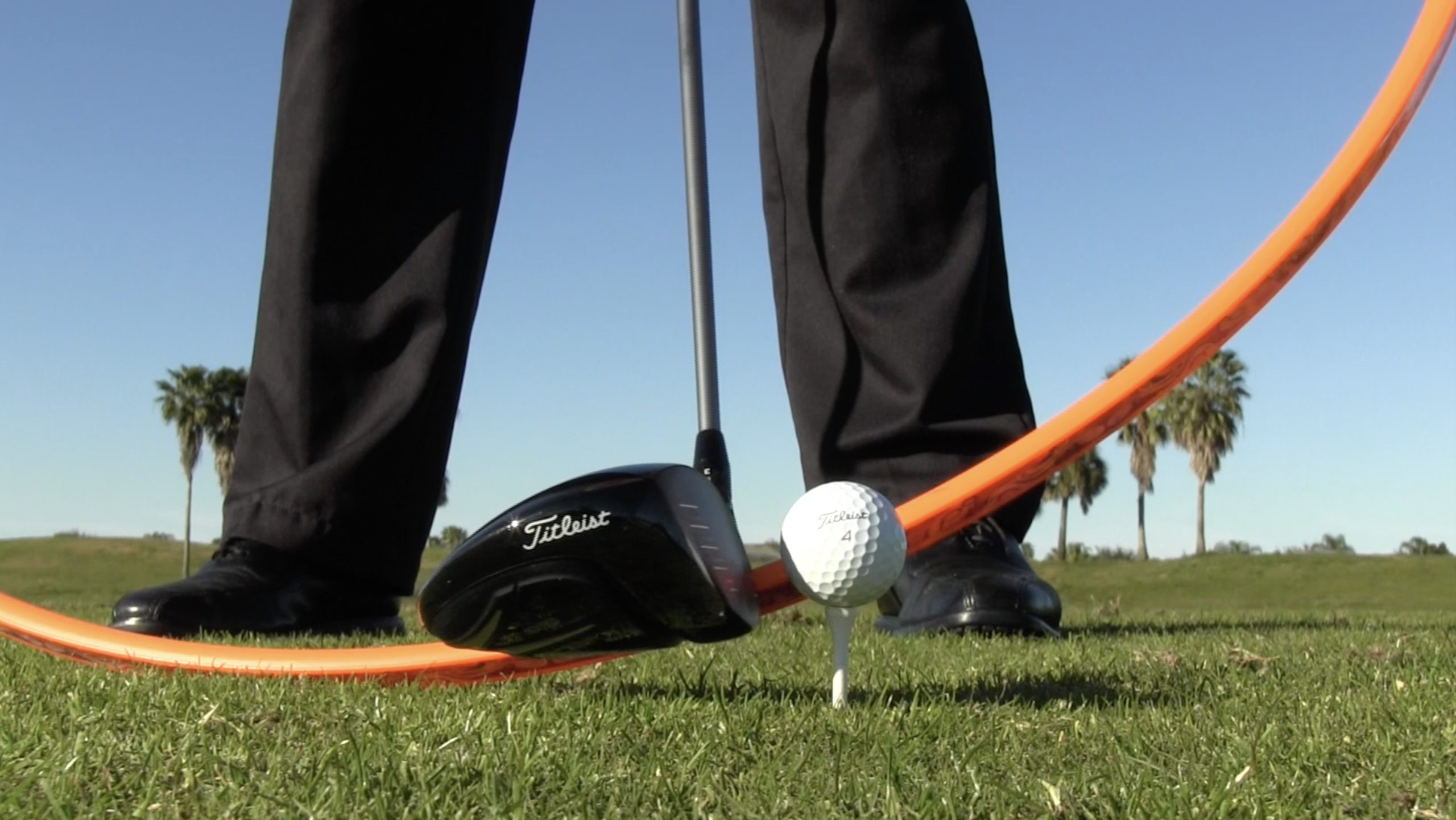
As you know, you always want to hit up on your driver. That’s why you tee up the ball. But hitting up on the ball changes the direction of your swing path.
I like to explain this using the visual of a hula hoop. Your golf swing travels in a circle shape. This circle is vertical, but it’s not straight up and down. If your swing shape is a hula hoop, it’s a hula hoop that leans in toward your body just a bit.
Because of this lean, the direction of your swing path changes after you hit the low point. So if the club head travels toward the right on the descent, it’s going to head back towards the left on the ascent.
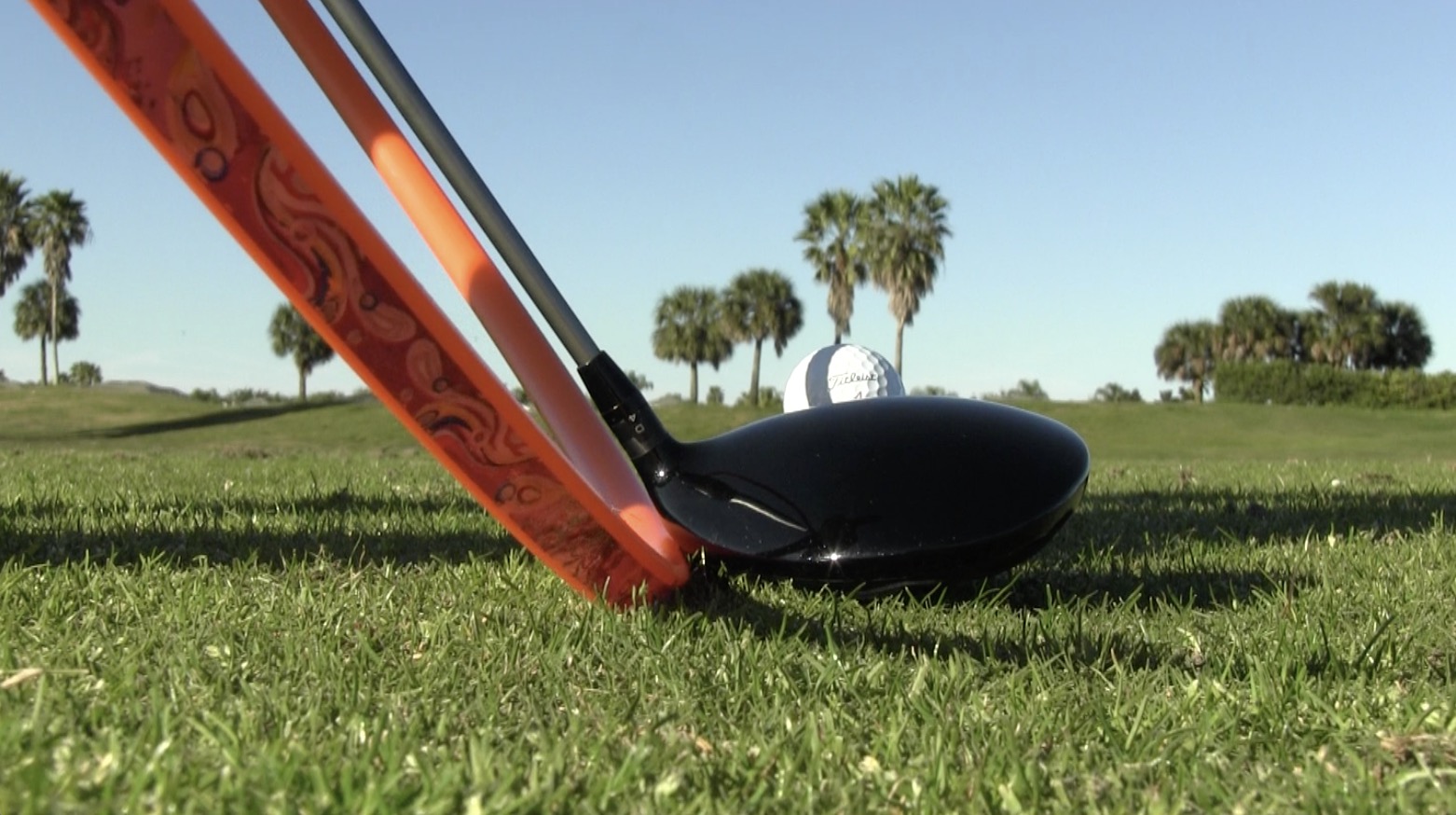
Now, you hit down on your iron shots, which means you make contact before the low point. When you hit the ball, the swing path is working to the right.
But if you use the exact same setup and swing for your driver, you’re going to catch the ball on the ascent, when the path is oriented to the left of the target.
In a moment, we’ll go over some tips on how to fix the slice in golf and become a better golfer.
First, let’s make sure you’re actually slicing it.
How to Diagnose a Golf Slice
Is it a slice or a shank? A fade or a slice?
There’s more than one way to define a right-curving ball flight, and you need to make sure you’re fixing the correct problem before you start running drills.
Here’s how to determine whether you’re slicing the ball at all and what’s causing the problem.
Is it a Slice or a Fade?
Both a slice and a fade curve to the right. So how are you supposed to know which one you’re dealing with?
For one thing, a fade is controlled. If you hit a fade, it’s usually because you meant to hit a fade.
In terms of what the flight looks like, a slice is basically a severe fade.
- When you hit a fade, the golf ball curves only about 5-7 yards from the target line.
- When you slice it, the golf ball curves farther . . . around 15 yards to the right of the target line.
If your ball flight resembles a peeling banana, you’re dealing with a slice.
Another way to diagnose it is to consider how much you have to adjust your aim to keep the ball on the fairway. If you have to aim your drives way over toward the left rough, you’re a slicer. If you just need to shoot for the left center of the fairway, you’re fading the ball.
Now that you’ve diagnosed the problem, let’s talk about how to fix a slice in golf.
Look at your Club
While we warn golfers against putting too much blame on their equipment, it is possible that your golf club is the problem.
If you keep hitting the same awful slice with the same driver or iron, consider scheduling a golf fitting. If your club isn’t the right fit for your golf swing, the lie angle of your club face is going to be off.
Lie angle refers to the angle between the toe and the heel in normal playing position. We’ll spare you the breakdown on the physics of golf. Just know this: if your lie angle is off, the club face is going to make contact with the ball at a tilt. This often results in a slice.
Look at Your Setup
One of the most common mistakes we see among slicers is their setup. Interestingly, problems in the setup often occur as an instinctual effort to fix the golf slice. Golfers see their ball veering to the right, so they make subconscious changes to aim more to the left.
Look for signs such as:
- A high trail arm and shoulder
- An open stance in which the lead foot shifts back a bit
This habits only make the slice worse.
Remember, even though your ball carries to the right, a leftward swing path is part of the problem.
Focus on Face Control First
Now, we will work on fixing your swing path. But there’s something we want you to understand first.
If you want to know how to fix a slice in golf, you need to understand that club face is king.
Other instructors may disagree with that. We’ve met many who would say that you have to fix the path before you can focus on club face. That may be decent advice for golfer who have loads of practice time to perfect their golf swing.
But if you’re a weekend warrior who just wants to have more fun on the course, we’ll tell you this much:
You’re going to get the results you want faster if you focus on face control first.
In fact, as you practice the following tips, you’ll find that correcting the club face leads to automatic adjustments that improve your overall performance.
Now let’s get into it. Here’s how to fix a slice in golf.
How to Correct a Golf Slice with Irons & Drivers
You’re not practicing golf only for the health benefits, right? You want to see some real results!
That’s why we’re going to show the easiest, most effective practice tips for fixing the slice.
We have some tips for your irons, but first, let’s take a look at your driver.
Adjust Your Driver Setup
We talked about how and why your driver setup could be causing you to slice the ball. Fortunately, fixing your setup is the easiest and fastest thing you can do to get rid of your slice.
The next time you tee up:
- Take your regular driver setup.
- Bump your lead hip out over your lead foot.
- Tilt your torso away from the target.
- Position your left arm and left shoulder higher than your right arm. (Reverse that if you’re left-handed.)
Need a little help finding the right amount of tilt in the torso? To test your tilt:
- Take your regular golf posture
- Hold the club against your body with the club handle traveling up the center of your chest.
- Tilt until you feel the club head hit your lead leg.
That’s the amount of tilt you need.
How to Fix a Slice in Golf: Practice the Takeaway
We told you club face is key for how to fix a slice in golf. Now we’re going to teach you a great drill that will help you prevent the most common error in face orientation.
This drill focuses on the takeaway, because that’s where you’re probably losing that square club face. The takeaway is the beginning of the backswing. It’s the segment of your swing motion when the club head leaves the golf ball, up until the club shaft is parallel to the ground.
That is the only part of your swing you’ll be practicing for this drill. If you find yourself at the top, you’ve gone too far. Here’s how it works.
- Pay attention to the logo on your golf glove.
- Focus on the journey of the club handle. You want to swing the handle from your lead thigh back to your trail high, at which point the club shaft should be parallel to the ground.
- Before the handle reaches your trail thigh, the logo on your golf glove should point down at the golf ball.
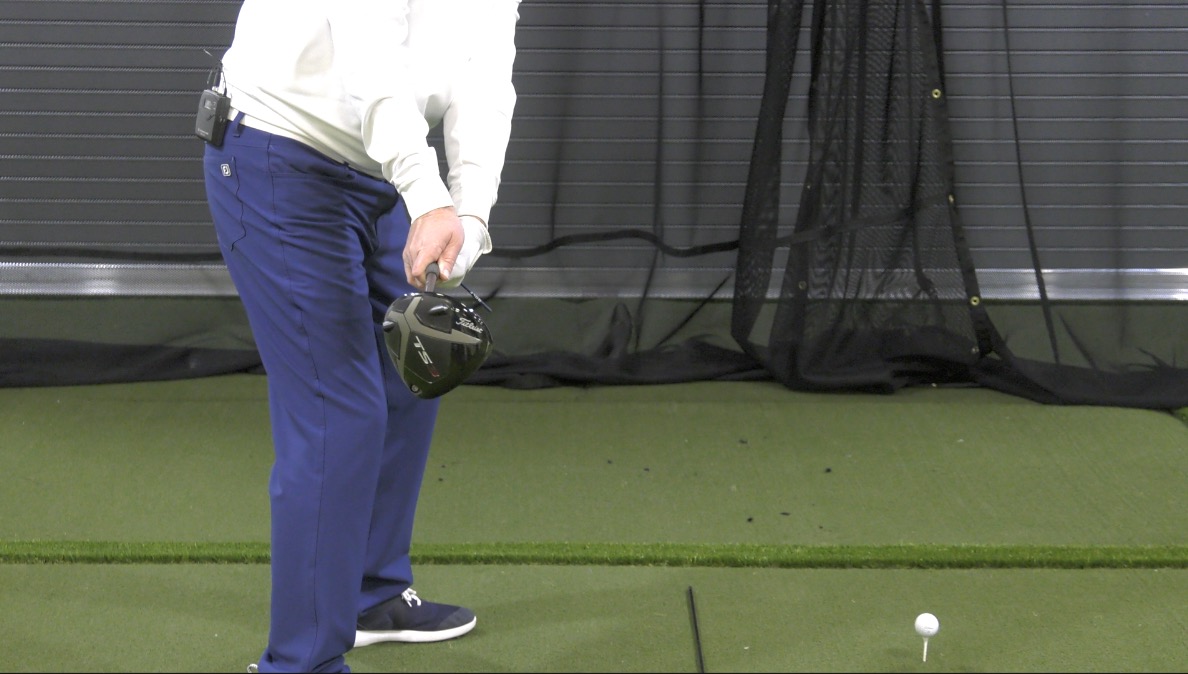
This simple drill helps you keep your body connected and sets you up to deliver a square club face.
Slicers tend to get disconnected in the takeaway. Their torso rotates back while the club head works away from their body. This forces an open club face.
TV Drill
This drill can be done with a driver, though we love using a 7-iron. It’s super simple.
- Set up your shot.
- Place an object—a tee, a towel, anything—just to the right of your target path.
- Take your golf shot.
- Finish with the butt end of your club pointed at the object you set out.
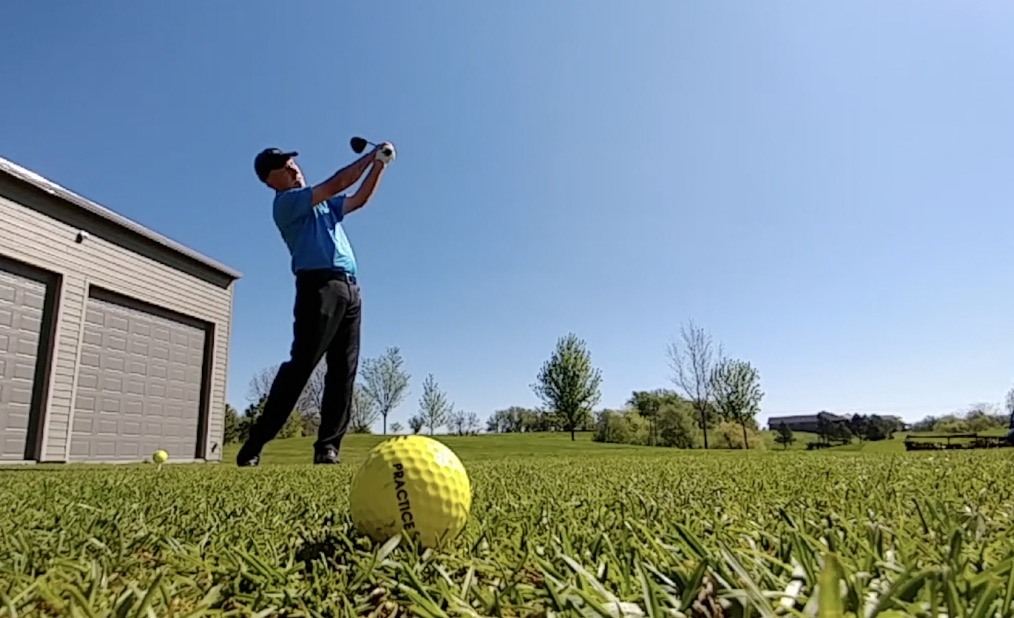
This drill teaches you how to release the club at the right time to deliver a square club face. It also forces you to work your swing path out, avoiding that habit of guiding your driver to the left.
Now, let’s cover one more extremely common problem when it comes to how to fix a slice in golf.
How to Fix a Slice in Golf with Long Irons
A lot of people struggle with the slice when they swing their long irons.
This is an extremely common challenge simply because long clubs are always harder to control. You can make all the adjustments—release the club at the right time, bump your lead hip, raise your left hand and arm—but you can’t minimize the big swing arc of a long club.
Now, one simple solution is to use a hybrid instead of a long iron. Club technology has advanced a lot of over the years, and a lot of golfers are shooting their best rounds with hybrids.
But if you’re dedicated to your long irons, here’s how you can fix your slice.
How to Stop Slicing Long Irons
Are you ready for the easiest tip in the history of golf?
Face control is so difficult with longer clubs simply because our hands are so far from the club face. You can help get some of that control back by choking down on a little on your long irons.
We also recommend positioning the golf ball a little farther back in your stance.
These two simple changes together could help you eliminate the slice from your long iron shots.
Next Time You’re at the Golf Course . . .
We’ve just shared a lot of information. Take some time to review these tips in light of your own golf game. What problems do you recognize? Which drills or trips are most appropriate for your golf practice?
Work on mastering these essential concepts for how to fix a slice in golf. Then, the next time you hit the course:
- Remember your club face awareness.
- Remember your tips for setting up your driver shots.
- Try running the TV drill a few times before you start your round.
You’ll be shocked at how easy it is to get rid of the slice.
Then, come back and let us know if this advice worked for you. We always love to talk golf, so join us in the comments!
For more in-depth golf tips, visit us at GreatGolfTipsNow.com. This golf instruction is completely free and packed with detailed advice to help you play better golf!


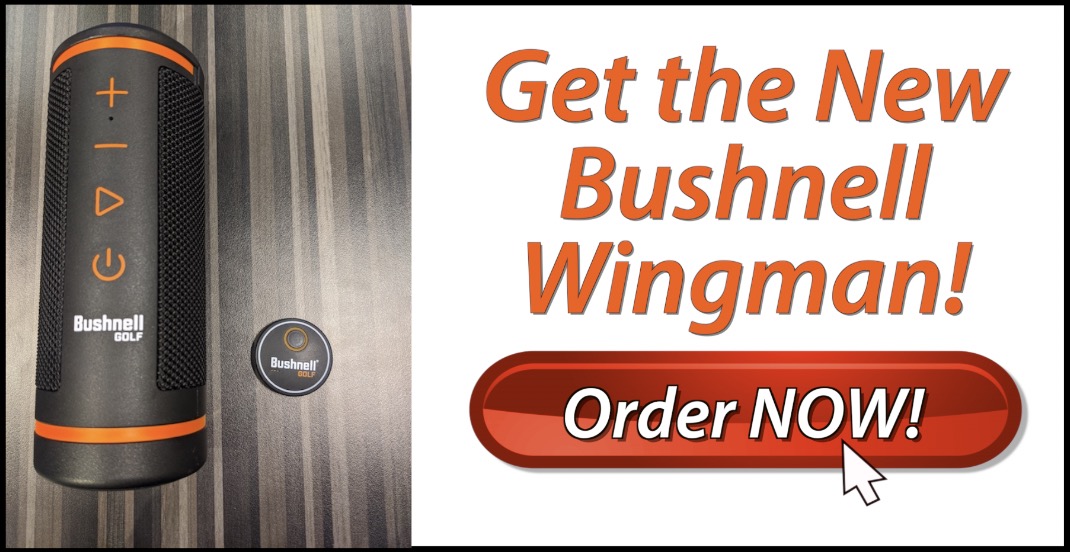
You made it easy. Thanks.
Thanks for reading Varun! Which tip or drill did you find most beneficial?
I love the way you break your instruction down into such simplicity.
Duncan,
Appreciate those kind words. Too often golf is made to be complicated…not our style. Keep it accurate and simple is the winning formula for us. Be sure to also check out our YouTube channel for more content https://www.youtube.com/channel/UCgz5-3igA0IfsyWGKTr6YKA
How to get height on my tee shot’s & Irons?
I top my irons a lot. I slice right on my tee shots.
I’m RH player.
86 YO. Male.
Any tips would be appreciated.
Thanks,
Jim
Jim,
Here is a good place to start https://youtu.be/AETp6WIpmSY